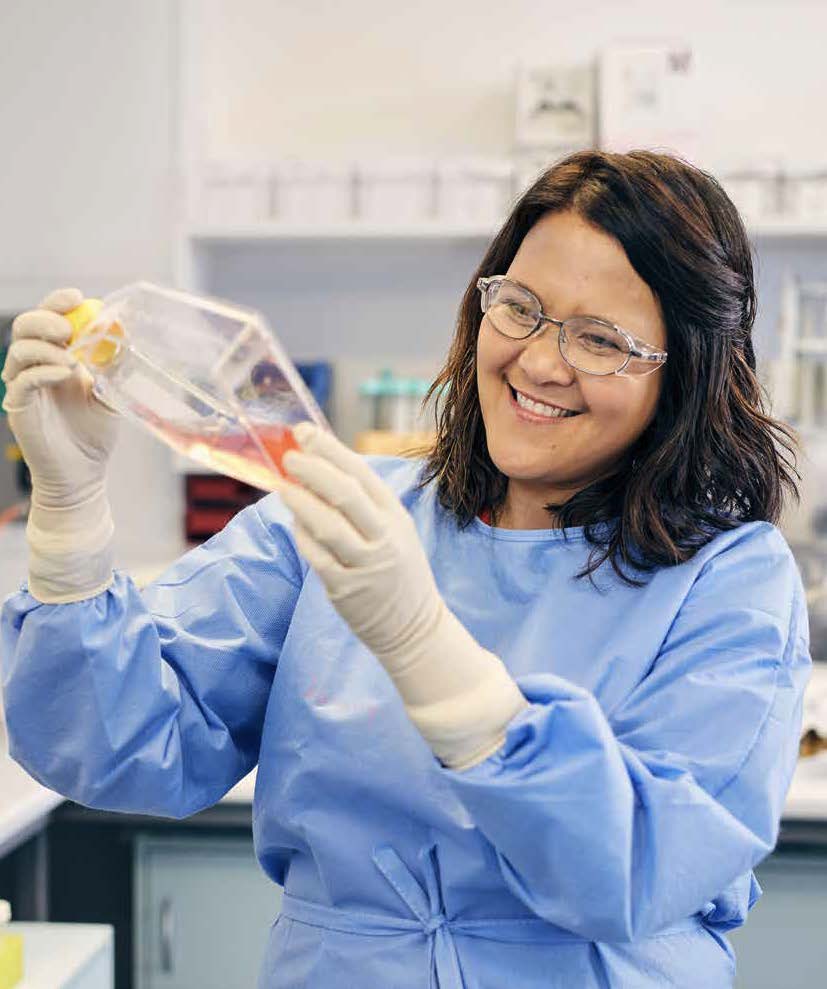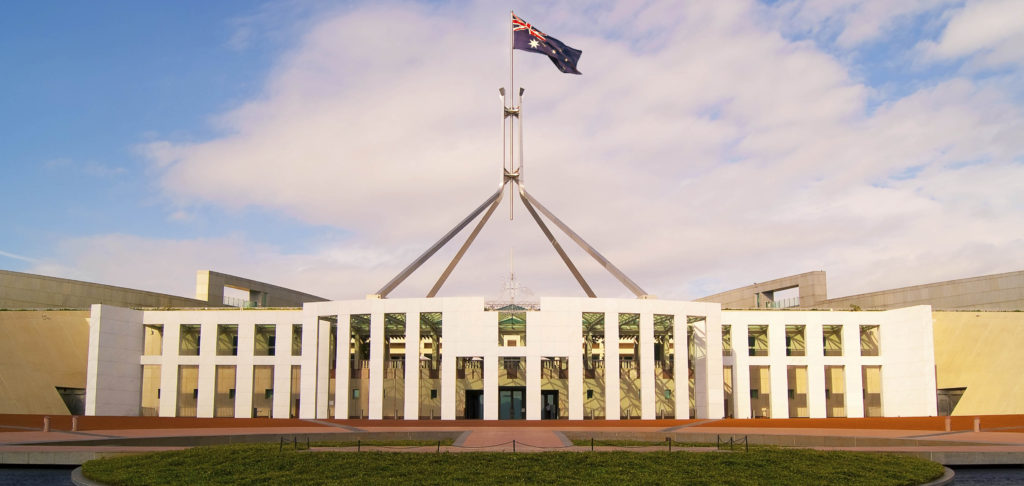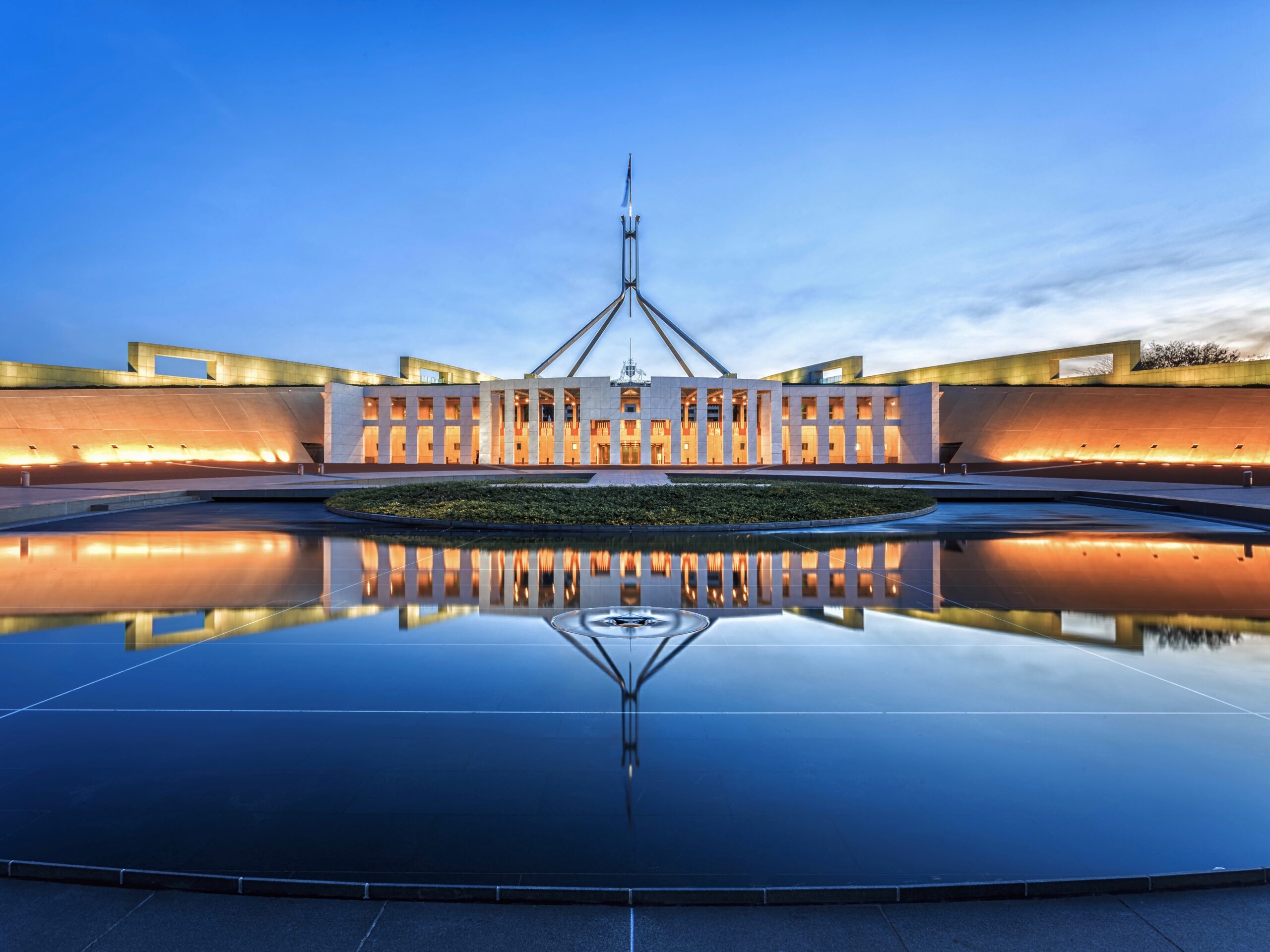Research Australia participated in consultations for the MRFF Australian Medical Research and Innovation Priorities and the MRFF Act Review. We were invited to a round table hosted by AMRAB, and provided a written submission. We recognised many positive enhancements have been suggested in the draft priorities for 2022-24. Our main concern was the lack of cohesion that links all the priorities to drive transformation across the entire health and medical research and innovation ecosystem.
Policy Update August 2024
This Policy Update covers developments since the May Budget.
National Science Statement and new National Science Priorities
The much-awaited new National Science Priorities were released on Monday 12 August, and were accompanied by a Science Statement. They are available from the Department of Industry Science and Resources website.
The Science Statement has a strong emphasis on the role science can play in supporting and creating industry, with a strong focus on economic prosperity. This is to be achieved through missions, multidisciplinary research and breaking down siloes, guided by 5 imperatives:
-
- Australian scientists, science institutions, and infrastructure shaping Australia’s science future
- Science at the centre of Australian industry
- A diverse, skilled workforce to underpin the translation of science into new industries
- Embracing science to drive Australia’s regional and global interests
- A science system prepared for future challenges
The new Statement provides an opportunity to position the health, disability and aged care sectors as an ‘industry’ that is vital to Australia’s future success and prosperity, as a means of aligning health and medical research more closely with the Statement.
The Statement also focuses on encouraging people to undertake STEM careers but there is little on supporting the existing research workforce. A lot about missions, multidisciplinary research and breaking down siloes.
Five national Science Priorities have also been identified:
-
- Transitioning to a net zero future
- Supporting healthy and thriving communities
- Elevating Aboriginal and Torres Strait Islander knowledge systems
- Protecting and restoring Australia’s environment
- Building a secure and resilient nation
Supporting healthy and thriving communities is a very broad priority, embracing social and environmental determinants, and building health literacy. It includes disability and ageing, as well as health and medicine more generally.
Modernising Human Tissue laws
On Thursday 14 August, the Attorney General, the Hon. Mark Dreyfus and Assistant Health Minister the Hon. Ged Kearney MP announced an inquiry by the Australian Law Reform Commission into Australian tissue donation laws. Largely the responsibility of the State and territories, the review will consider whether legislative reform is required to harmonise laws across the nation. The inquiry will include consideration of donation of tissue for scientific purposes. Further information on the Inquiry is expected to be provided on the ALRC’s website in coming weeks.
Australian Centre for Disease Control
While the interim Australian CDC has been operating within the Department of Health the Department has advised a new timeline for its development, to enable recommendations from the report of the COVID-19 Inquiry, due at the end of September, to be incorporated into the design, followed by further consultation. The establishment of the Australian CDC will be subject to the passage of legislation; the lack of funding for the CDC in this Budget indicates the Government does not expect it to start in this financial year.
Australia’s Economic Accelerator
Only available to universities and funded through the Education portfolio, the AEA is set to provide funding of $270 million over 2024/25, through two separate programs:
| Round 1 | Round 2 | |
| AEA Ignite
Proof of Concept (TRL2.3.4) Max. $500,000 for 12 months |
$60 m. open now | $30m. open Nov.24 |
| AEA Innovate
Proof of Scale (TRL 5,6,7) Max. $5m. for up to 2 years |
$120m. open now | $60 m. early 2025 |
For AEA Ignite an industry partner is recommended and it is mandatory for AEA innovate.
The programs must fit within the Government’s seven Priority areas for investment:
-
- Value-add in Resources
- Agriculture, forestry & fisheries
- Medical Science
- Renewables & low emission tech
- Defence Capability
- Transport
- Enabling capabilities
In addition to being in one of these priority areas, The AEA Advisory Board for the Australia’s Economic Accelerator has set the investment plan for the AEA for 2024/25. As a result, any proposal must also fit one of the six focus areas selected by the Board:
-
- Critical and strategic minerals processing
- Sustainable fuels
- Digital agriculture
- Quantum
- Artificial intelligence
- Advanced manufacturing
The most likely ‘fits’ within the focus areas for medical science are going to be products which require advanced manufacturing or utilise AI.
The focus area may change when the AEA Advisory Board sets its new investment plan for 2025/26. More information is available here.
National HMR Strategy
The National HMR Strategy now has its own webpage.
‘The strategy will:
-
- cover the entire sector and include all levels of government, industry, philanthropy, academia and consumers
-
- strengthen and leverage Australia’s world-leading research capability.’
Several current activities have been brought under the umbrella of the National Health and Medical Research Strategy, including:
-
- The MRFF/MREA alignment
- The National One Stop Shop; and
- The health and medical research workforce audit
MRFF/MREA Alignment
The MRFF/MREA alignment is proceeding in two stages, with legislative change required to fully implement a merged administration of the MRFF and MREA, with both funds managed by the NHMRC. ‘In the interim, the NHMRC and the department are working together to address key concerns and issues while we consider options for implementation. This includes working together to better use existing advisory committees (eg MRFF will seek advice from NHMRC committees), developing and implementing policies together, and other efforts that better align the two funds without requiring formal governance reforms.’ [Consultation Summary Report, Next Steps.]
Strategic Examination of R&D
Announced on Budget night, the new strategic examination of Australia’s R&D system is intended ‘to determine how we can get more value from every taxpayer dollar invested in research, maximise the contribution of science and R&D to the broader economy and maintain our competitive edge.’ Led by the Science and Industry Minister, it is nonetheless be a whole of government review.
A secretariat has been set up within the Department of Industry Science and Resources, and Dom English has moved from the Department of Education to lead the Secretariat. Consultation on the terms of reference and the members of the independent panel has been undertaken but the results are not yet public.
With health and medical research representing 26% of all Australian R&D, Research Australia will continue to champion a focus on health and medical research as part of this review.
National Reconstruction Fund
Fulfilling an election promise, the legislation to create the National Reconstruction Fund (NRF) was passed in early 2023.
The NRF was initially scheduled to invest $15.0 billion over 7 years from 2023–24 to provide targeted co-investments in seven priority areas: resources; agriculture, forestry and fisheries sectors; transport; medical science; renewables and low emission technologies; defence capability; and enabling capabilities. It can provide debt, equity or guarantees, but does not provide grants. The NRFC’s first corporate plan is available here. With time running out to make initial investments in this financial year, the plan commits the NRF to making its first investments before the end of 2024. No investments have been publicly disclosed to date.
HTA Review
The Health Technology Assessment (HTA) Policy and Methods Review concluded on 4 May 2024. The HTA Review Reference Committee which was responsible for overseeing the HTA Review, held its final meeting on 2 May 2024 and its final report has been provided to the Minister for Health and Aged Care.
The Minister has yet to make the Review Report, or any response to the report, public.
Recent Submissions
Good Institutional Practice Guide
In May, the NHMRC released a draft Good Institutional Practice Guide, which seeks to provide guidance to NHMRC-funded institutions and NHMRC-funded researchers about good institutional practice ‘to promote open, honest, supportive and respectful institutional cultures conducive to the conduct of high-quality research’. Its development has been overseen by NHMRC’s Research Quality Steering Committee.
Research Australia made a submission to the NHMRC, directed to the CEO Professor Steve Wesselingh. While welcoming the Guide we indicated that awareness of practices and initiatives that can improve research culture is not the primary barrier to improving research culture; significant work has already been done to identify the issues and raise awareness. The key problem is implementing the measures needed to improve the culture.
We suggested the finalisation and publication of the Good Institutional Practice Guide will provide impetus for improvement that we can build on if we act collectively. Research Australia suggested leadership and involvement from the NHMRC will be essential, and would demonstrate the NHMRC’s ongoing commitment to improving research culture and practice. We offered to work with the NHMRC, the Research Quality Steering Committee, other peak bodies and research institutions that want to participate in a coalition to improve research practice and culture.
Allied health Workforce
In May the Department of Health and Aged Care released a consultation paper on a draft outline of the National Allied Health Workforce Strategy, intended to ensure there are enough highly trained allied health professionals distributed across the country.
Research Australia’s response to the consultation paper focussed on the need for the strategy to recognise the role of allied health professionals as clinician researchers in creating a self improving allied health sector and supporting retention of allied health professionals.
To achieve this the Strategy needs to better support clinician researchers and the submission highlighted ways to do this.
Upcoming Consultations and Submissions
Keep up to date with new consultations on the Research Australia website here.
All Research Australia’s submissions to closed consultations can be found here.
Pre Budget Submission calls for greater investment in health and medical research and innovation
Research Australia’s Pre Budget submission to the Treasurer ahead of the 2024 Budget has made the case for increased investment in Australian health and medical research and innovation to support a healthier and more prosperous Australia.
The Australian Government’s investment in R&D is below the OECD average.
There is an additional $323 million approved for release from the MRFF in 2024-25 that the Government is not investing in medical research and innovation.
The Universities Accord process provides the ideal opportunity to increase the investment in the NHMRC, ARC and indirect research costs.
We have advocated for a greater role for the Australian Centre for Disease Control, for the greater use of Government procurement to support Australian innovation, and for the full development of the National HMR strategy and workforce strategy.
Read Research Australia’s submission here.
Towards a National Health and Climate Strategy
In June 2023 the Department of Health announced the commencement of a consultation on development of Australia’s first National Health and Climate Strategy, in recognition of the urgent need to:
-
- reduce greenhouse gas emissions from the health system, and
- strengthen the resilience of the health system and communities to anticipate and respond to the health impacts of climate change.
Research Australia’s submission addresses many of the questions contained in the discussion paper, and proposes the creation and funding of a Centre for Sustainable Healthcare Innovation, to support the identification and develop of mitigation measures.
The Government published its National Health and Climate Strategy on 3 December 2023.
Australia’s future includes medical products manufacturing
The Science and Industry Minister asked the House Standing Committee on Industry, Science and Resources to conduct an Inquiry into developing advanced manufacturing (AM) in Australia. The Terms of Reference include:
-
- opportunities in relation to job creation and productivity;
- international trends;
- Australia’s competitive strengths and advantages;
- barriers to existing manufacturers, particularly SMEs
- financial and non-financial investment opportunities or possible reforms to support the growth of AM
- opportunities to increase employment in AM; and
- skills needed in advanced manufacturing.
Research Australia’s submission has responded in relation to the opportunities and challenges for manufacturing medical products in Australia. We have called for a National Medical Products Industry Plan, with a goal of making Australia a net exporter of medical products, supported by a medical products workforce plan.
Research Australia’s submission is available here.
Research Australia urges Senate to support the National Reconstruction Fund
Research Australia has used its submission to the Senate Economics Legislation Committee Inquiry into the National Reconstruction Fund Bill to urge the Committee to recommend the passage of the Bill, subject to two amendments proposed by Research Australia.
Research Australia believes the National Reconstruction Fund provides the opportunity to better leverage Australia’s world leading health and medical research and create a vibrant and successful medical products industry which propels Australia forward to become a net exporter of medical products.
Doing so would provide significant benefits for Australians with more secure access to medical products, better health outcomes and the creation of well-paying jobs and new businesses in a sector that has enormous scope for ongoing global growth.
The proposed amendments are:
-
- require the Ministers to report to the Parliament on how the NRF has complemented other measures by the Government to support research, innovation and manufacturing. (Clause 91)
- require the quarterly investment reports to identify recipients of financial accommodation by name and to specify the priority area to which the financial accommodation relates. (Clause 82)
Research Australia’s submission is available here.
Research Australia responds to NRF Implementation
Research Australia believes the National Reconstruction Fund (NRF) has a vital role to play in creating a mature and vibrant domestic medical products industry as a cornerstone of a post-carbon Australian economy.
We have made four recommendations in response to the consultation on the implementation of the NRF:
-
- The Ministers should obtain the advice of a future Centre for Disease Control about medical products for which there is a critical unmet need for domestic manufacturing. This should be a consideration in how funds are subsequently allocated by the NRF, although not to the exclusion of the need to generate a return on the investment.
- Development of the investment mandate for the priority area of medical products should include identification of areas with the potential for profitable domestic manufacturing. This should be a consideration in how funds are subsequently allocated by the NRF, although not to the exclusion of the need to generate a return on the investment.
- The Australian Government should create a National Medical Products Industry Plan to accompany the introduction of the National Reconstruction Fund to make the most of all the Government’s investments throughout the health and medical research and development pipeline.
- The Australian Government should develop a medical products research, development and manufacturing workforce plan to determine where the gaps in existing skills are and to address them.
Research Australia’s submission addresses most of the questions posed in the consultation paper. The submission is available here.
Dementia Action Plan needs new funding for research
The Australian Government’s draft Dementia Action Plan has recognised the importance of more research to improving the lives of those living with dementia, their family and carers but has not proposed any actions that will lead to more research being funded.
Research Australia’s submission has addressed this shortfall, and proposed the draft Dementia Research Strategy draw on the work undertaken by the now defunct NHMRC National Institute for Dementia Research. We have also recommended the proposed Australian Dementia Research Strategy be an ‘Australian Dementia Research, Innovation and Implementation Strategy’ to better meet the Action Plan’s objective of maximising the impact of research and innovation. Accountability for implementation of research outcomes and the funding of this activity needs to be clearly assigned by the Action Plan and the Strategy.
Research Australia’s submission is available here.
Pre Budget submission calls for strategic investment
Research Australia’s Pre-Budget submission to the Treasurer acknowledges the progress made since the election. This includes putting Australian innovation and industry on a stronger footing by introducing the legislation to create the National Reconstruction Fund and Australia’s Economic Accelerator (first proposed by the previous Government). These measures are recognition the Government shares Research Australia’s view that it is no longer good enough to just sell off our best ideas to the rest of the world.
Australia has world leading health and medical research but current investment is inadequate, poorly aligned and failing to deliver on the potential health and economic benefits. In summary, Research Australia has recommended:
-
- A National Medical Products Industry Plan with the aim of Australia becoming a net exporter. This can capitalise on the Government’s commitment to the National Reconstruction Fund, and help secure Australia’s national security, by manufacturing more of the products we rely on here in Australia.
- A National Health and Medical Research and Innovation Workforce Plan to ensure we have the workforce we need for the future.
- A national stocktake of health and medical research and development activity across Australia
- A new Clinician Researcher Fellowship Scheme to help drive innovation efficiency and improved equity in our health system
- Increased investment in research and development, especially through the funding programs of The National Health and Medical Research Council and the Australian Research Council.
Improving the ARC Act
On 30 August 2022, the Minister for Education, announced an independent review of the ARC Act to consider the role and purpose of the ARC within the Australian research system so it can meet current and future needs and maintain the trust of the research sector.
The Expert Panel appointed to undertake the Review issued a consultation paper which included specific questions respondents were asked to address.
Research funding from the Australian Research Council (ARC) is relevant to Research Australia’s membership because, while the ARC does not fund ‘medical research’, the ARC funds much of the basic research that underpins health and medical research, as well as supporting the broader research ecosystem.
Research Australia’s responses were directed to specific questions relevant to our membership.
Research Australia’s submission is available here.










